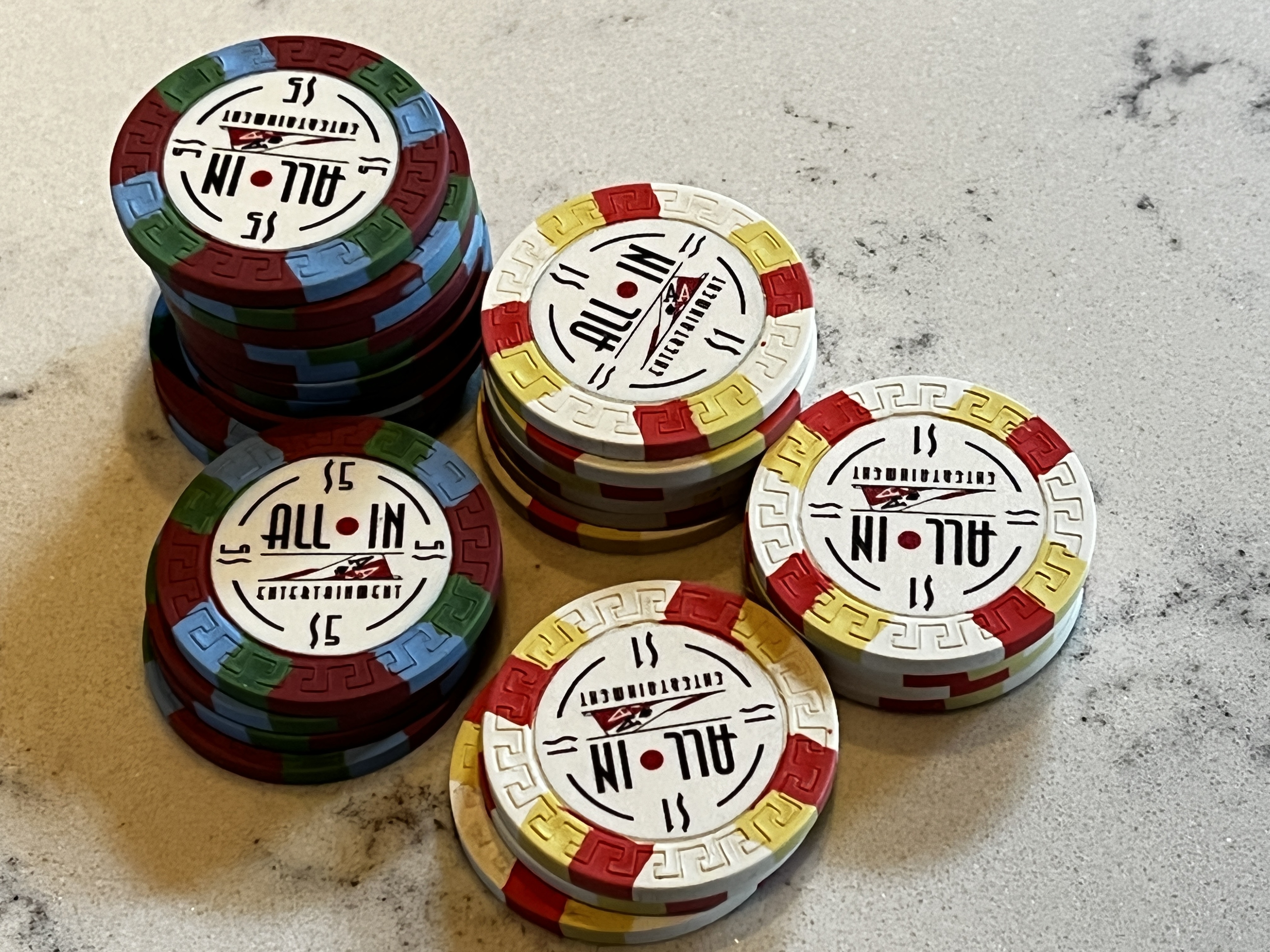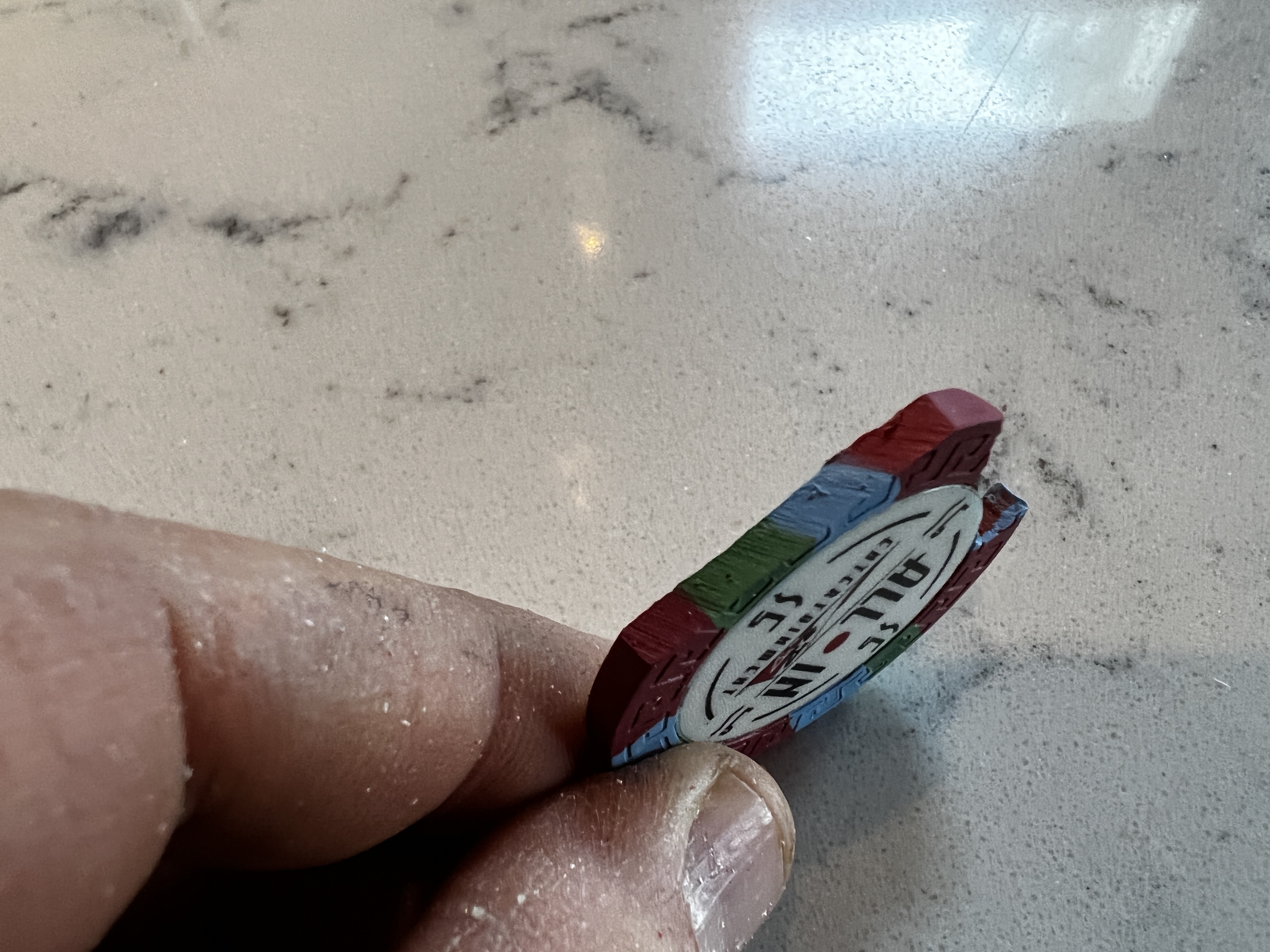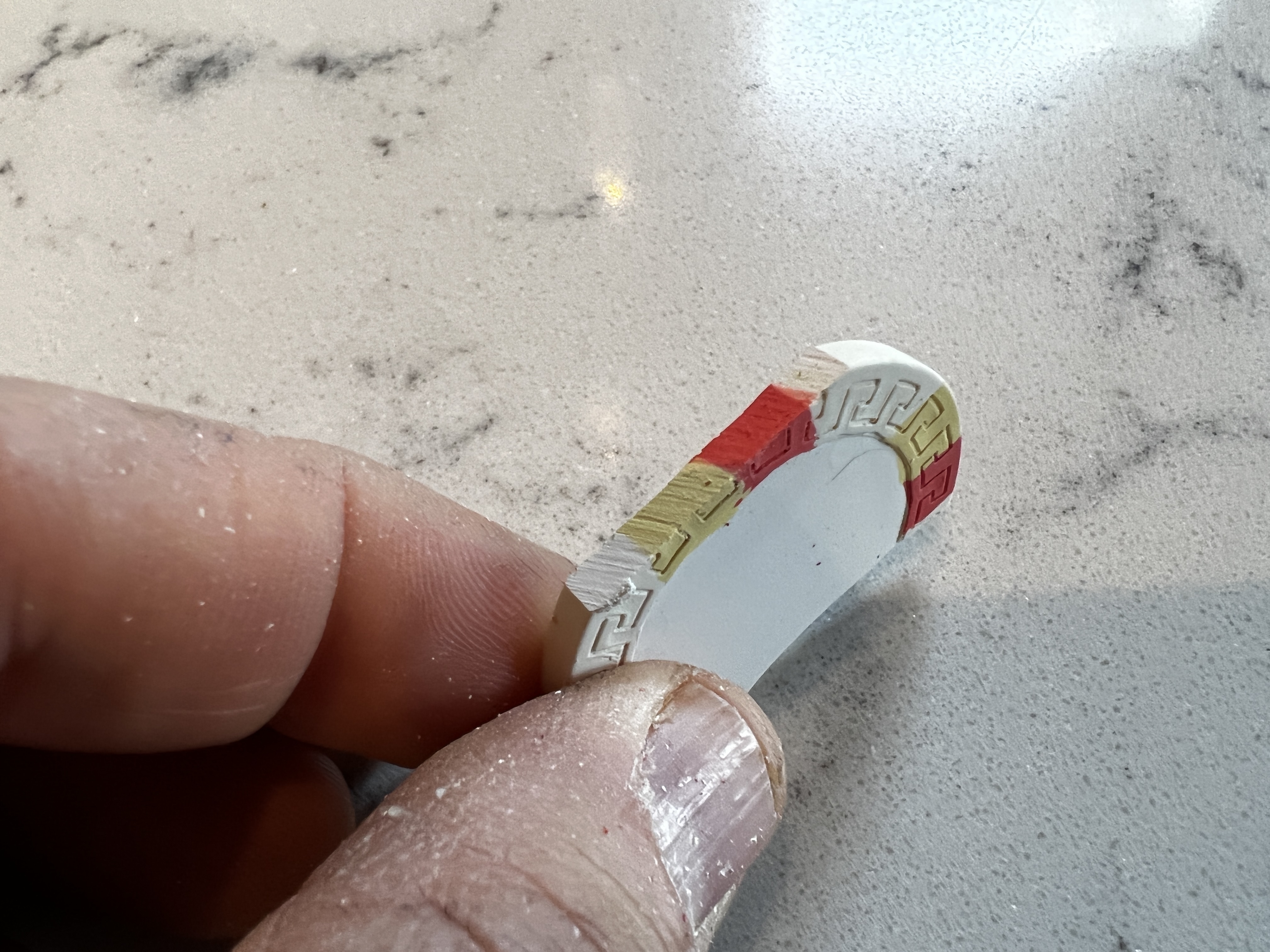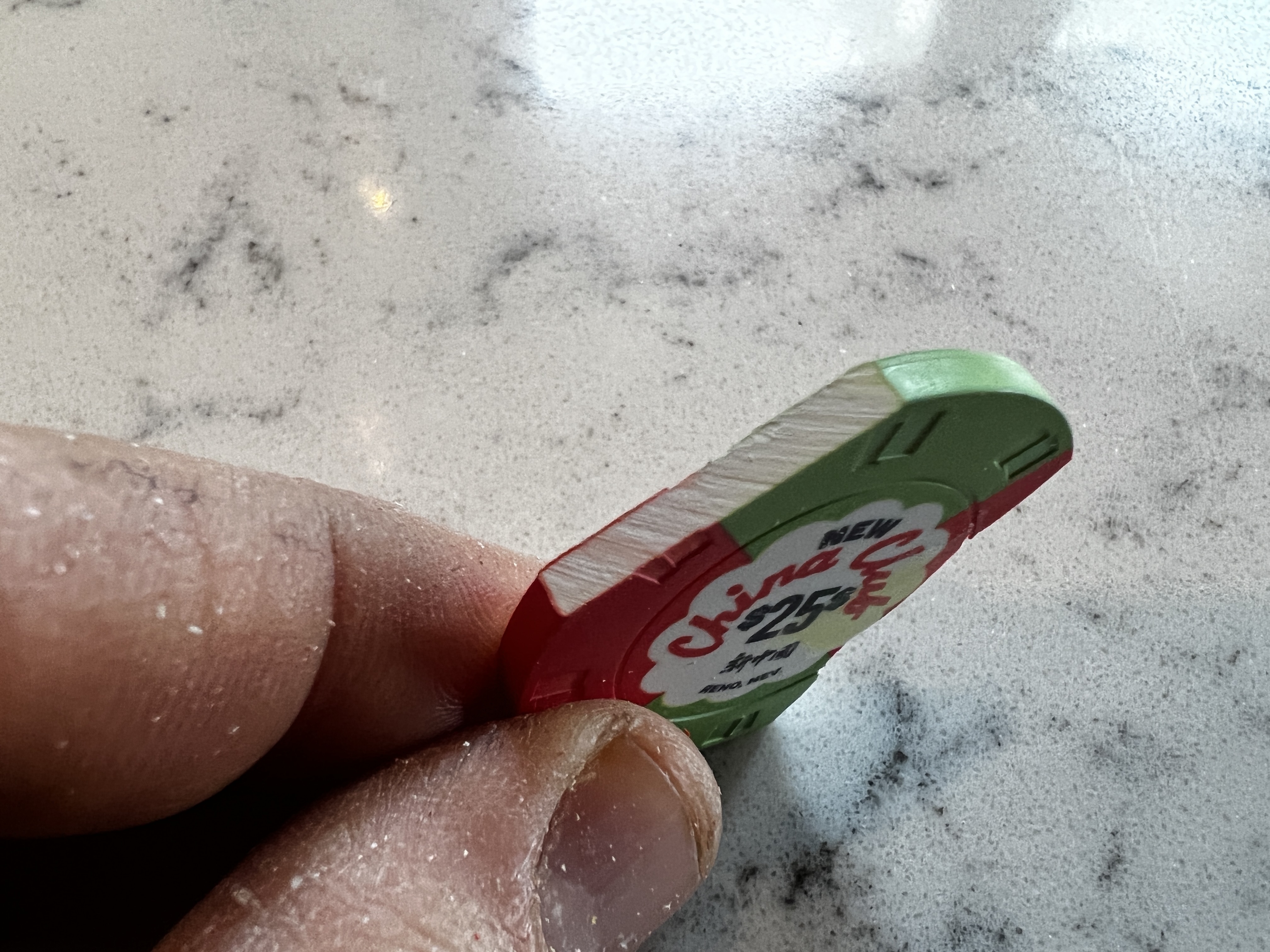diablo2112
High Hand
I've been sampling a number of sets loosely called "China Clays" the last few weeks as part of my initial acquisitions. I purchased a nice set of Nexgen80s off the classifieds here, and IMHO, they're nicest of the "China Clays" I've handled. They shuffle nicely, are consistently 10.0g per chip, and feel a bit chalky and sound good. Overall, a decent chip for a starter set. I know they have a reputation for durability issues. They seem ok so far, and my shuffle stacks are holding up well to hundreds of ripples. A few other posts archived here make claims of good durability for Nexgen80 chips if you do a bit of searching.
Now for the interesting part. I've been reading on injection molding vs. compression. Everyone says China clays are injection molded. Indeed, the Card Mold NCC (New China Club) chips I recieved are clearly injection molded. Grinding down a chip (see below) shows that the colors are surface-imprinted. So far, so good. The Nexgen 80s show a very different construction. For starters, the spots are a different color, completely through the chip. In addition, on close inspection, the spots are not identical chip to chip. There's small variations in the shape of each. This is best seen in my gemological miscroscope, but each chip is definitely different. I was under the impression that such features are characteristic of compression molded chips, not injection. Am I wrong? Thoughts on this?
Here's a few pics to illustrate. Thanks.




Now for the interesting part. I've been reading on injection molding vs. compression. Everyone says China clays are injection molded. Indeed, the Card Mold NCC (New China Club) chips I recieved are clearly injection molded. Grinding down a chip (see below) shows that the colors are surface-imprinted. So far, so good. The Nexgen 80s show a very different construction. For starters, the spots are a different color, completely through the chip. In addition, on close inspection, the spots are not identical chip to chip. There's small variations in the shape of each. This is best seen in my gemological miscroscope, but each chip is definitely different. I was under the impression that such features are characteristic of compression molded chips, not injection. Am I wrong? Thoughts on this?
Here's a few pics to illustrate. Thanks.




